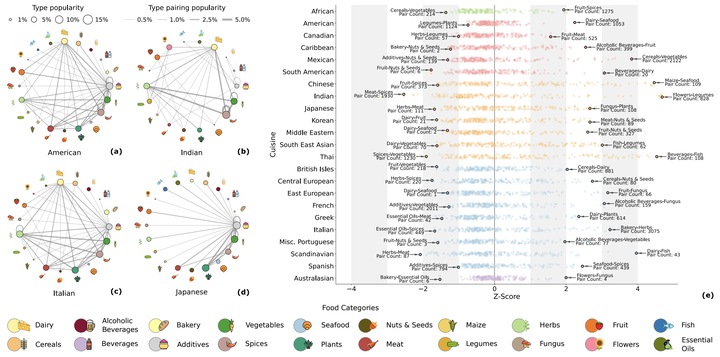The networks of ingredient combination in cuisines around the world

Abstract
Investigating how different ingredients are combined in popular dishes is crucial to reveal the fundamental principles behind the formation of food preferences. Here, we use data from food repositories and network analysis to characterize worldwide cuisines. In our framework, each cuisine is represented as a network, where nodes correspond to ingredient types and weighted links describe how frequently pairs of ingredient types appear together in recipes. The networks of ingredient combinations reveal cuisine-specific patterns, highlighting similarities and differences in gastronomic preferences across different world regions. We find that popular ingredients, recurrent combinations, and the way they are organized within the backbone of the network provide a unique fingerprint for each cuisine. Hence, we demonstrate that networks of ingredient combinations are able to cluster global cuisines into meaningful geo-cultural groups, and can also be used to train models to uniquely identify a cuisine from a subset of its recipes. Our study advances our understanding of food combinations and helps uncover the geography of taste, paving the way for the creation of new and innovative recipes.